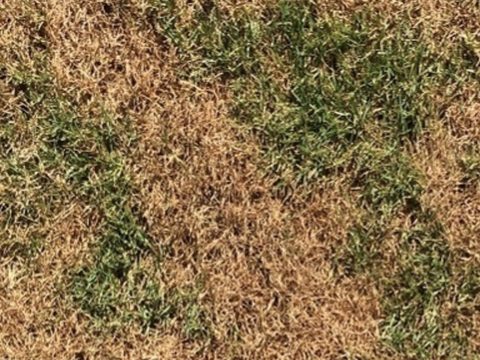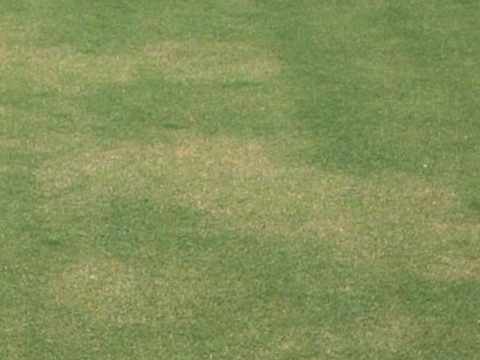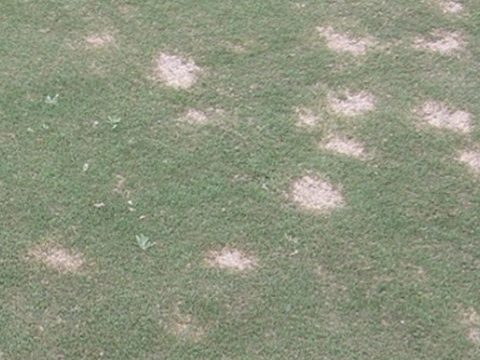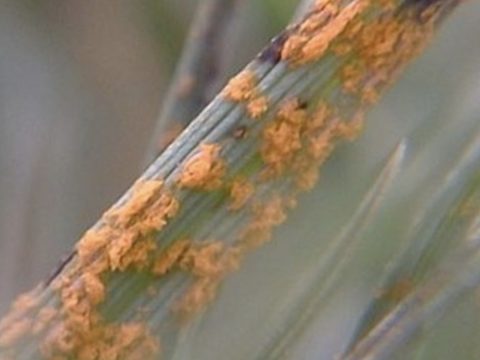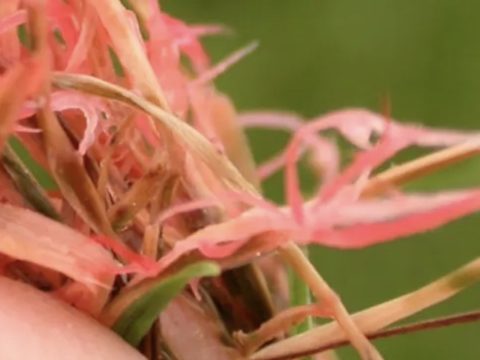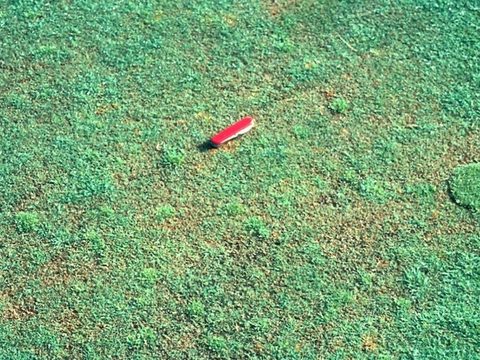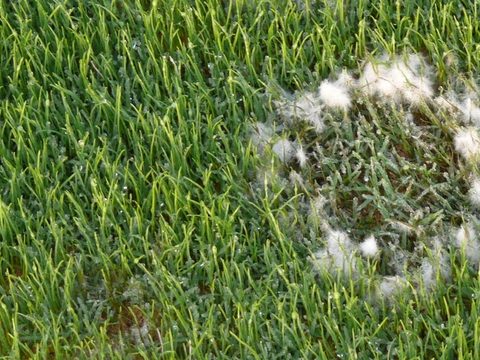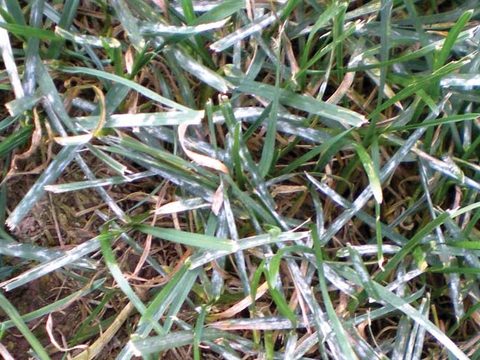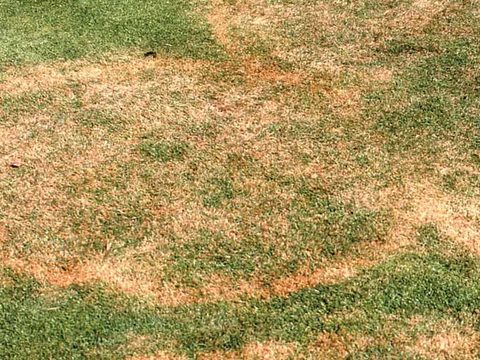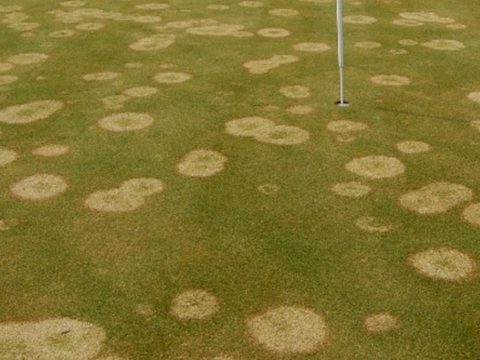South Africa Turf Disease Guide - Rhizoctonia Leaf and Sheath Spot (Rhizoctonia Zeae)
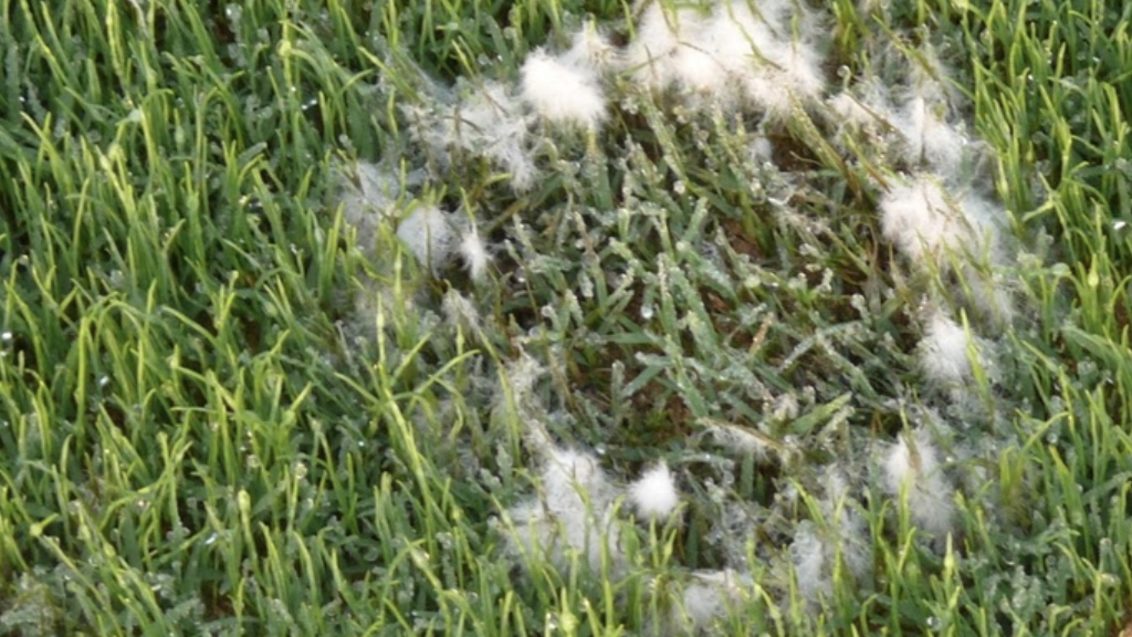
Causal Agent:
Rhizoctonia zeae and Rhizoctonia oryzae
Susceptible Turfgrass:
Most species of warm and cool season turfgrass
Symptoms:
The symptoms of Rhizoctonia Leaf and Sheath Spot can vary dramaticall2y4depending on the grass cultivar, climatic and atmospheric conditions, soil, and intensity of the turfgrass management. This disease typically causes thinned areas resembling scalped areas or semi-circular thinned rings in warm-season turfgrass and can also be commonly confused with fairy ring or hydrophobic areas. In cool season turfgrass, small patches of blighted turfgrass that measure 12 cm or more in diameter may exist in conjunction with brown patch. The disease can often have a darker red/orange hue to the infected turfgrass. Leaf spots may, but oftentimes do not, occur. These thin areas can also be slower to respond to fungicides as the disease is most active at high temperatures which can impede turfgrass re-growth.
Infection from the pathogens that cause Rhizoctonia Leaf and Sheath Spot is not as fast as with Brown Patch or Large Patch (R. solani), nor does it occur in the same conditions. Infection is most favoured by high canopy temperatures of 28°–36°C. This disease can be quite active in the heat of the Summer as temperatures in the turfgrass canopy exceed the 37°C range. Turfgrass that is stressed from drought and over-reliance on irrigation with poor quality water high in carbonates and salinity is more subject to infection. This can be a seemingly hot, dry weather disease as only humidity or moisture within the crown is necessary for infection.
Integrated Turf Management Tips
- Avoid nitrogen applications when the disease is active
- Increase the height of cut on greens, especially during drought conditions
- Increase the air circulation
- Irrigate turf early in the day
- Manage leach salts periodically with heavy irrigation events
- Reduce thatch
- Use fans when practical to improve air flow and lower canopy temperatures
- For best results, use contact or penetrant fungicides to prevent brown patch
Just tap the links below to read about other turf diseases. Or download the full free guide at the bottom.
- Anthracnose
- Brown Patch
- Brown Ring Patch (Waitea Patch)
- Dollar Spot
- Fairy Ring
- Superficial Fairy Ring
- Grey Leaf Spot
- Large Patch
- Microdochium Patch
- Powdery Mildew
- Pythium Blight
- Pythium Root Rot (Root Dysfunction)
- Red Thread
- Rhizoctonia Zeae (Rhizoctonia leaf and sheath spot)
- Rusts: Crown, Leaf and Stem
- Spring Dead Spot
- Summer Patch
- Take-all Patch and
- Take-all Root Rot
If you would like to have a complete copy with all the turf diseases, you can download it on the link below.



